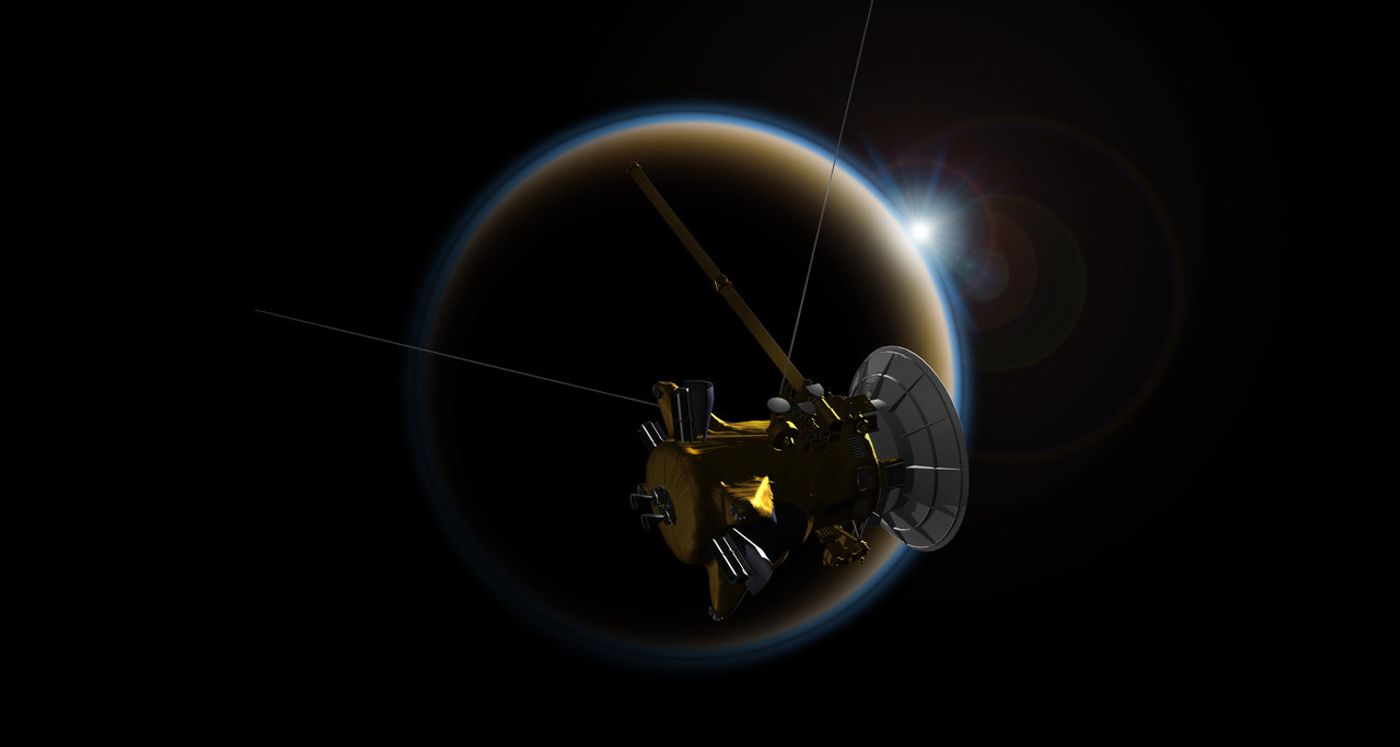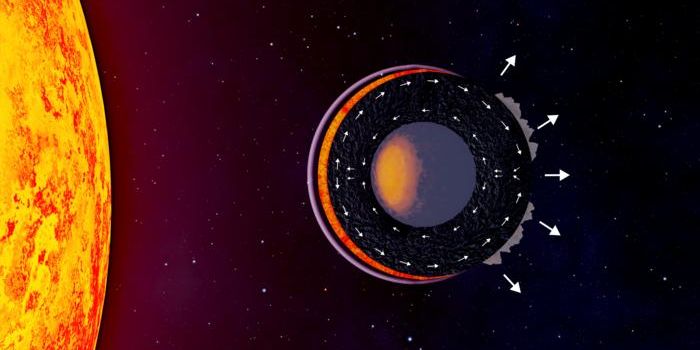Cassini's Orbit Around Saturn Slowed With Help From Titan's Gravity
The Cassini mission is nearing its end. The probe is preparing to dive into Saturn’s atmosphere on September 15th, and NASA is grabbing all the last-minute data the agency can before Cassini gets destroyed during the maneuver.
The spacecraft performed its final flyby of Titan, Saturn's largest moon, at approximately 3:04 P.M. Eastern time on Monday while it was about 73,974 miles away from the moon's surface. NASA now refers to the event as a “goodbye kiss.”
Image Credit: NASA/JPL-Caltech
The somewhat dramatic name comes from how Titan played an instrumental role in setting Cassini up for its suicidal dive. The moon's gravitational influence 'twisted' the probe's trajectory, lining it up for the end of what NASA has been calling the Grand Finale.
Related: Everything you need to know about Cassini's Grand Finale
Titan effectively slowed down the spacecraft’s orbit, which will allow Saturn’s gravity to overpower the spacecraft’s velocity and pull it closer. In time, it will fall to the point of no return and burn up in the planet’s atmosphere from the intense friction.
NASA says they're destroying the spacecraft because it poses a risk of colliding with some of Saturn’s moons after it runs out of fuel.
With moons like Enceladus and Titan harboring potentially-habitable conditions, risking a collision is the last thing NASA wants to do before getting the chance to explore these worlds for themselves. Instead, this maneuver will keep the worlds sanitary for future exploration missions.
"Cassini has been in a long-term relationship with Titan, with a new rendezvous nearly every month for more than a decade," said Cassini Project Manager Earl Maize at NASA's Jet Propulsion Laboratory in Pasadena, California.
"This final encounter is something of a bittersweet goodbye, but as it has done throughout the mission, Titan's gravity is once again sending Cassini where we need it to go."
Related: Cassini inches closer to the September 15th Grand Finale, a suicidal dive into Saturn's atmosphere
The probe was active during Monday's distant flyby, snapping pictures and collecting information along the way. Scientists will begin receiving that data by about 9:19 P.M. Eastern time as Cassini phones in with our Earthly communication equipment once more.
Without a doubt, Cassini saw a successful 13 years while orbiting Saturn. Scientists collected a bevy of information throughout its service that unlocked secrets about the planet and our solar system, so saying goodbye to the legendary spacecraft is somewhat bittersweet.
Future missions will visit the system once again to investigate the habitability of Saturn's moons, but plans for these are still in the air right now. We're just as antsy as astronomers are to learn more about their conditions, but unfortunately, we'll just have to wait.
Source: NASA









